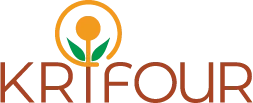
Particle Boards: All you need to know!
What is particle board?
Particleboard is a type of engineered wood product that is made by compressing wood chips and particles with a binder under high pressure and temperature. It is one of the most environment-friendly materials as it uses waste material effectively. As particle board is made from wood waste it is relatively inexpensive as compared to its alternatives such as MDF and Plywood. Particle Board is also called chipboard or low-density fibreboard (LDF).
Particle board is a popular building material used in almost every construction project. It is extensively used in the production of all types of furniture, flooring underlayment, countertops, panelling, and partition structures. Particle boards are gaining popularity due to its versatility, easy availability and less cost.
There are several different types of particle boards available in the market, each with its own unique properties and applications. Apart from the traditional wood based particle boards, another popular variant of particle boards is bagasse based particle board.
What is baggasse based particle board?
Bagasse-based particle board is a type of engineered wood product that is made from sugarcane bagasse, which is the fibrous residue that remains after juice extraction from sugarcane. It is an eco-friendly alternative to traditional particle boards made from wood.
The process of making bagasse-based particle board involves mixing the bagasse fibers with a synthetic resin binder, such as urea formaldehyde or phenol formaldehyde, and compressing them into boards under high pressure and temperature. The resulting boards have a smooth and uniform surface and can be cut, drilled, and sanded like traditional particle boards.
Bagasse-based particle board offers several advantages over traditional particle boards. It is a renewable and sustainable resource as bagasse is a byproduct of the sugarcane industry and would otherwise be disposed of as waste. It also has good dimensional stability and resistance to moisture, making it suitable for applications in high humidity environments.
Bagasse-based particle board is used in a variety of applications, including furniture, cabinetry, wall panels, and flooring. It is particularly popular in India and other countries with a large sugarcane industry.
Particle Board Applications
In residential construction, particle board is used in furniture like shelves, beds, wardrobes, side tables, television units. In dry climate areas modular kitchen cabinets made from particle boards are used. In office furniture, it is used in making computer tables, shelves, drawers, etc.
The general size of particle boards is 2449 x 1219 mm (8’x4’). The boards are available in different thicknesses such as 9 mm, 11 mm, 12 mm, 17 mm, 18 mm, and 25 mm. The cost of particle boards depends upon its type and dimensions. Its cost ranges approximately from INR 25/sq.ft. to INR 60/sq.ft.
Particle board industry in India
In India, the particle board industry has been growing steadily over the years due to the increasing demand for affordable and durable furniture and construction materials.
The particle board industry in India is primarily concentrated in the southern region of the country and particle boards are manufactured by many small companies as well as big manufacturers. Some of the major players in the Indian particle board industry include Action-Test, Greenply Industries, Century Plyboards, Kitply Industries, ASIS India, etc.
What is driving its growth in India?
One of the main drivers of the particle board industry in India is the growth of the construction sector. The increasing demand for affordable and high-quality building materials has led to the use of particle board in a wide range of construction applications, including flooring, ceiling tiles, wall panels, and roofing.
In addition to construction, the particle board industry in India is also driven by the furniture manufacturing sector. Particle board is a popular choice for furniture due to its affordability, durability, and versatility. It is used to make a variety of furniture items such as tables, chairs, cabinets, and shelves.
Overall, the particle board industry in India is expected to continue its growth trajectory in the coming years due to the increasing demand for affordable and high-quality building and furniture materials.
What are different types of particle boards?
There are several different types of particle boards available in the market, each with its own unique properties and applications. Some of the common types of particle boards include:
- Standard Particle Board: This is the most basic type of particle board and is made by compressing wood particles with a synthetic resin binder. It is widely used for furniture, shelving, and construction applications.
- Moisture Resistant Particle Board: This type of particle board is designed to resist moisture and is made using a water-resistant resin binder. It is commonly used in areas where moisture levels are high, such as bathrooms, kitchens, and laundry rooms.
- Fire Retardant Particle Board: This type of particle board is made using special additives that make it resistant to fire. It is commonly used in commercial buildings and high-rise structures where fire safety is a major concern.
- Veneered Particle Board: This type of particle board has a thin layer of real wood veneer on its surface, giving it the appearance of solid wood. It is commonly used in furniture making and cabinetry.
- Melamine Faced Particle Board: This type of particle board has a thin layer of melamine resin on its surface, giving it a smooth and durable finish. It is commonly used in furniture, kitchen cabinets, and wall panels.
- High-Density Particle Board: This type of particle board has a higher density and strength than standard particle board, making it suitable for applications where greater strength is required, such as flooring and structural panels.
Overall, the choice of particle board depends on the specific application and requirements. Manufacturers may also offer customised particle boards to meet specific customer needs.


